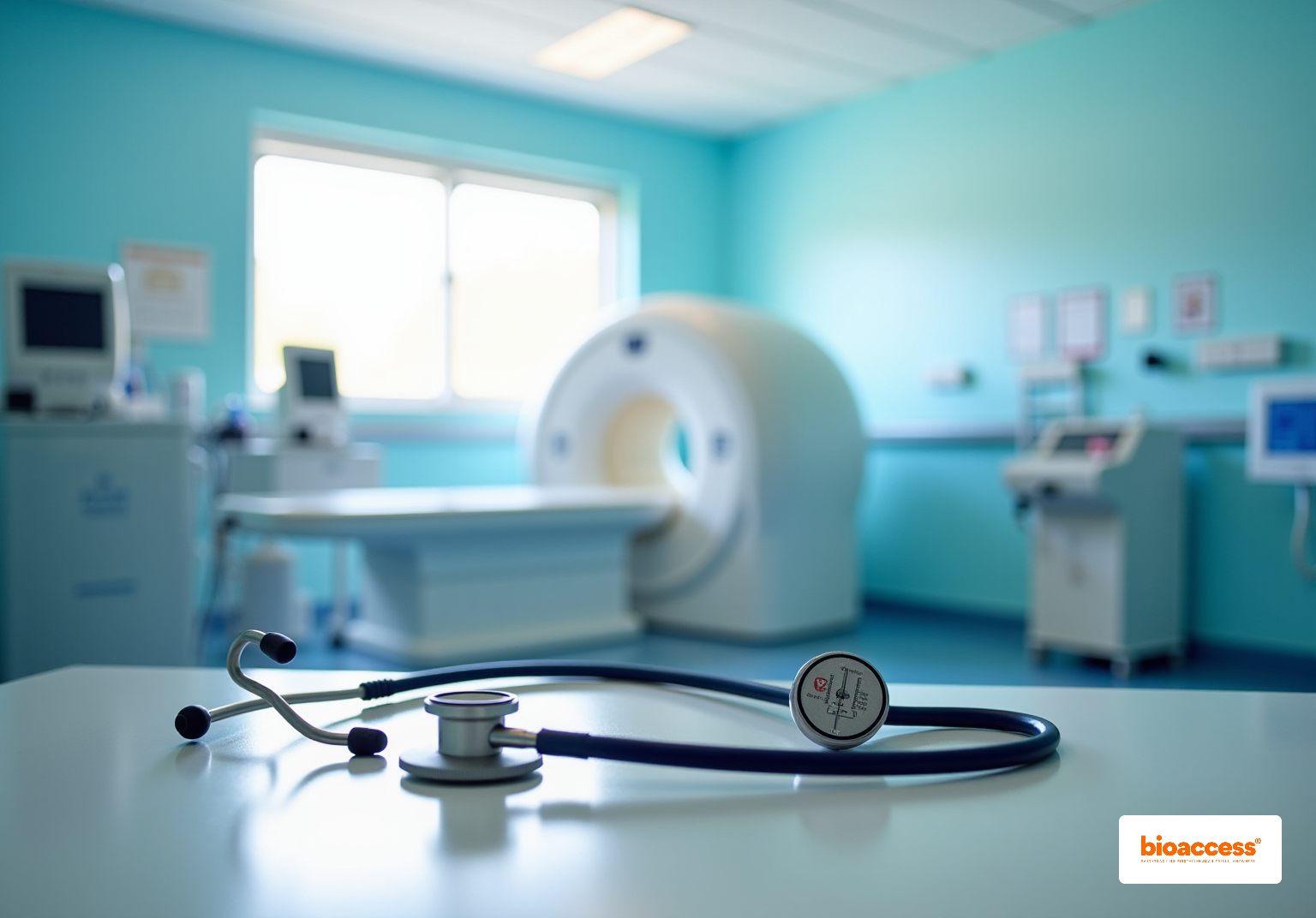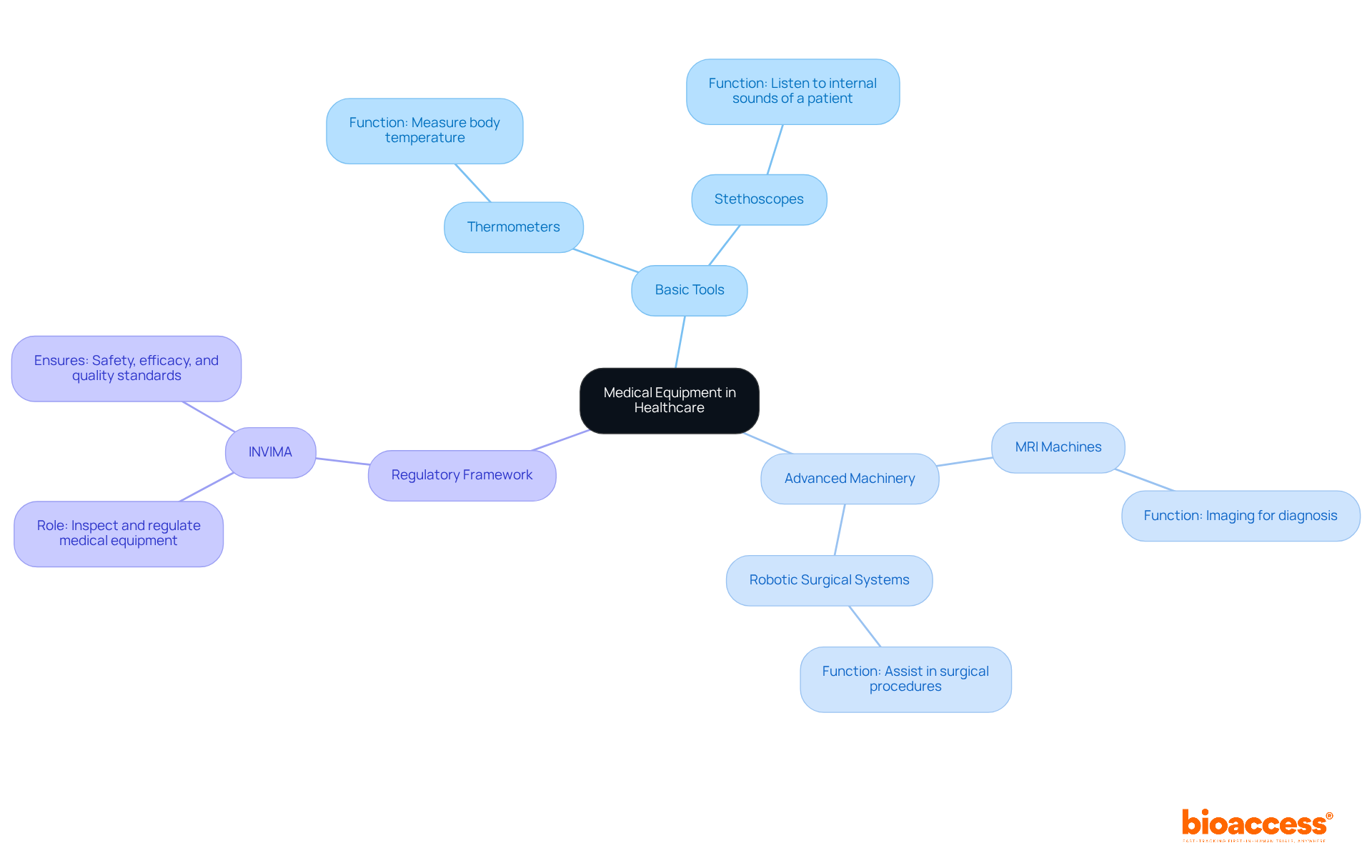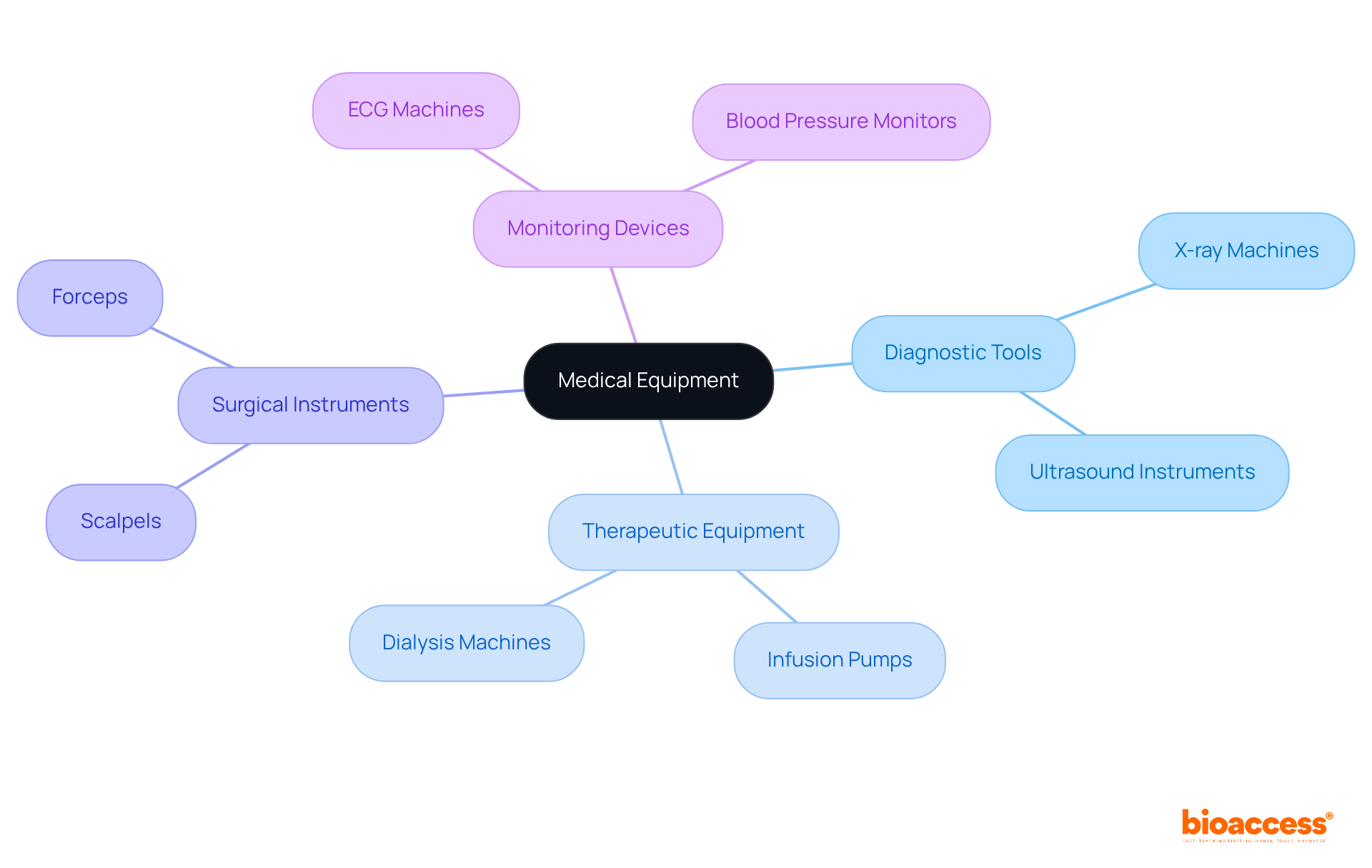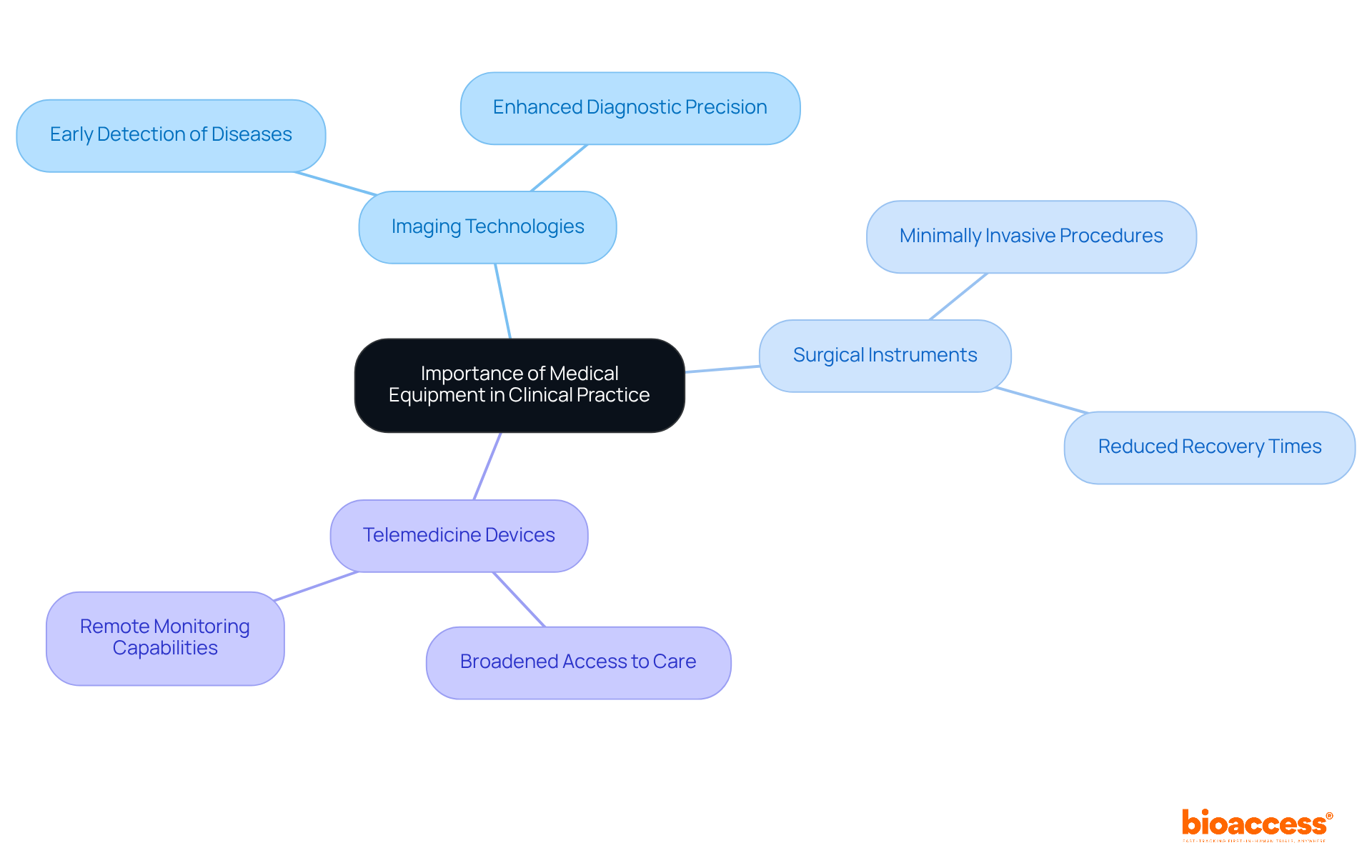


The article emphasizes the diverse types of medical equipment and their critical role in enhancing healthcare quality. These essential tools, ranging from diagnostic to therapeutic devices, are pivotal for accurate patient diagnosis, effective treatments, and improved health outcomes. Furthermore, regulatory oversight supports their safety and efficacy, ensuring that healthcare providers can rely on these instruments to deliver optimal care.
The landscape of healthcare is intricately woven with a diverse range of medical equipment, each playing a pivotal role in patient care and treatment. From basic diagnostic tools to advanced surgical machines, these devices not only enhance the quality of medical services but also directly impact patient outcomes. However, as technology evolves, healthcare providers must ensure they are utilizing the most effective tools available. This article delves into the various types of medical equipment, their significance in clinical practice, and the ongoing innovations that are reshaping the future of healthcare.
Types of medical equipments include a diverse array of devices and instruments utilized in healthcare settings to diagnose, monitor, and treat patients. This spectrum of types of medical equipments ranges from basic tools, such as thermometers and stethoscopes, to sophisticated machinery, including MRI machines and robotic surgical systems. The primary function of these healthcare tools is to enhance the quality of care provided to patients, ensuring accurate diagnoses and effective treatments.
In Colombia, the regulatory framework governing healthcare equipment is overseen by INVIMA (Colombia National Food and Drug Surveillance Institute), which is pivotal in inspecting and regulating the marketing and production of health products. Specifically, INVIMA's Directorate for Medical Equipment and other Technologies is tasked with ensuring that medical products adhere to safety, efficacy, and quality standards. This oversight is essential, as it directly influences patient outcomes and the efficiency of healthcare delivery, ultimately contributing to the overarching enhancement of healthcare systems.

Medical tools are pivotal in the healthcare ecosystem and can be classified into different types of medical equipment, including:
Diagnostic tools, such as X-ray machines and ultrasound instruments, are crucial for the detection of medical conditions. Therapeutic equipment, including infusion pumps and dialysis machines, plays a vital role in patient treatment. Surgical instruments, like scalpels and forceps, are indispensable for executing operations. Monitoring devices, such as ECG machines and blood pressure monitors, provide real-time tracking of patient health. Each category significantly contributes to enhanced patient care and outcomes, underscoring the importance of these tools in clinical research.

The significance of types of medical equipments in clinical practice is paramount. At bioaccess™, we assert that high-quality healthcare instruments not only enhance the precision of diagnoses but also facilitate prompt interventions and improve patient safety.
Advanced imaging technologies, for instance, enable early detection of diseases, while precise surgical instruments support minimally invasive procedures that significantly reduce recovery times. Moreover, the integration of innovative technologies, such as telemedicine and remote monitoring devices, has broadened access to care, especially in underserved areas.
As the health sector evolves, the role of types of medical equipments remains critical in delivering effective and efficient patient care, highlighting our commitment to innovation and quality in health technologies.

The progression of healthcare has been marked by significant technological advancements in types of medical equipments that have transformed the medical field. From the invention of the stethoscope in the early 19th century to the advent of sophisticated imaging technologies such as MRI and CT scans, the development of various types of medical equipments has enhanced diagnostic capabilities and expanded treatment options. Recently, the emergence of artificial intelligence and machine learning has further revolutionized the field, facilitating predictive analytics and personalized medicine.
Moreover, the impact of Medtech clinical studies extends beyond mere technological progress; they create jobs, foster economic growth, and enhance types of medical equipments within local economies. This international collaboration not only propels innovation in medical devices but also leads to improved health outcomes on a global scale, particularly in regions like Latin America, where the contributions of professionals such as Dr. Sergio Alvarado are crucial in advancing clinical research and integrating artificial intelligence into healthcare solutions.

The critical role of medical equipment in the healthcare landscape is paramount. These tools, which range from basic diagnostic devices to advanced surgical instruments, are essential for delivering high-quality care that significantly enhances patient outcomes. By understanding the various types of medical equipment and their functions, we can appreciate how they collectively contribute to the efficiency and effectiveness of healthcare services.
This article highlights key points regarding the diverse categories of medical equipment, including:
Each category plays a pivotal role in patient care, facilitating accurate diagnoses, effective treatments, and continuous health monitoring. Moreover, the importance of regulatory oversight, such as that provided by INVIMA in Colombia, ensures that these medical products meet safety and efficacy standards, ultimately benefiting both healthcare providers and patients.
Reflecting on advancements in medical technology, it becomes evident that the evolution of medical equipment continues to shape the future of healthcare. Innovations such as artificial intelligence and telemedicine not only enhance the capabilities of medical devices but also broaden access to care. The ongoing commitment to improving medical equipment serves as a call to action for healthcare professionals, policymakers, and innovators alike, emphasizing the need for collaboration and investment in technologies that will lead to better health outcomes for all.
What is medical equipment?
Medical equipment refers to a diverse array of devices and instruments used in healthcare settings to diagnose, monitor, and treat patients.
What are some examples of medical equipment?
Examples of medical equipment include basic tools like thermometers and stethoscopes, as well as sophisticated machinery such as MRI machines and robotic surgical systems.
What is the primary function of medical equipment?
The primary function of medical equipment is to enhance the quality of care provided to patients by ensuring accurate diagnoses and effective treatments.
Who regulates medical equipment in Colombia?
In Colombia, the regulation of medical equipment is overseen by INVIMA (Colombia National Food and Drug Surveillance Institute).
What is the role of INVIMA in relation to medical equipment?
INVIMA's Directorate for Medical Equipment and other Technologies is responsible for inspecting and regulating the marketing and production of health products to ensure they meet safety, efficacy, and quality standards.
Why is the regulation of medical equipment important?
The regulation of medical equipment is essential as it directly influences patient outcomes and the efficiency of healthcare delivery, contributing to the overall enhancement of healthcare systems.